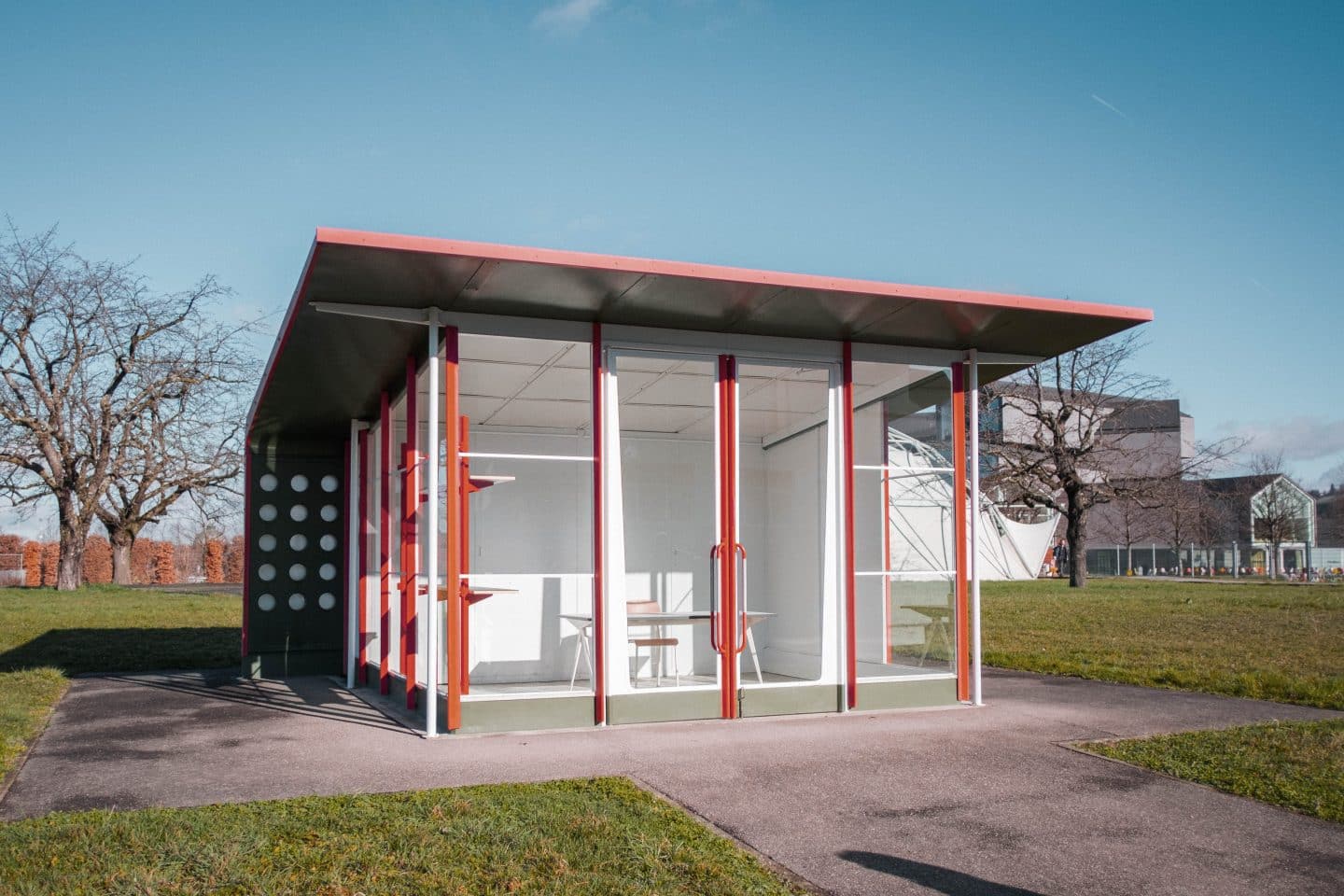
*Guest Contribution
Designer Adam Kimmel is an artist at his core, whether his canvas is fashion, furniture, or interiors. Accordingly, he has drawn inspiration from artists and artisans working in a range of different media. For example, Kimmel has cited the French architect, furniture designer, and craftsman Jean Prouvé as a key influence on his own work.
It’s not hard to see the connection between the two: Kimmel and Prouvé have much in common. They share a relentless commitment to the highest principles of modernism and minimalist design, as well as a bold and uncompromising signature style. There’s also the unselfconscious elegance that infuses both designers’ approach to the world.
New perspectives
Jean Prouvé (1901 – 1984) always thought of himself as an engineer. Over the six decades of his career, he concepted and built some of the most influential designs of the 20th century. His output included furnishings for both home and commercial use, as well as architectural facades and decorative components. He demonstrated his minute attention to detail and quality through his focus on advanced metalworking techniques, particularly their applications to the construction of architectural fixtures and furnishings.
Prouvé became particularly known for his contributions to the technology and design of modular and mass-produced metal structures and prefabricated housing. His techniques allowed architects to construct cost-effective prefab buildings that nevertheless were distinguished by their high quality, lightness and grace, and sense of personality. He is one of the rare creators to whom the cliché about being ahead of his time genuinely applies.
Importantly, his commitment to ideals of social good resulted in greater democratization of design as he created plans for housing war refugees and other fellow humans in need of shelter.
Self-taught metalworker becomes renowned architect
Jean Prouvé was born in Nancy, in northeastern France, and died there at almost 83 years old. He initially took up blacksmithing and metalworking, then moved into working with aluminum and steel as part of his growing interest in modernism. For more than 30 years, he ran his own workshop specializing in wrought-iron work. He was entirely self-taught—perhaps one of the last exemplars of an era in which it was actually possible to make major architectural and artistic contributions without a formal design pedigree.
His accomplishments include his deployment of metal panels and folded sheet metal in public buildings in the 1930s, his work with the great Le Corbusier, and his prefab construction components in the immediate post-war years, notably used in the Headquarters of the Federation of Building Industries in Paris. His singular focus on creating furniture with broad back legs gives his pieces at once unusual gravity and an incredible sense of visual lightness and freedom. This silhouette would for him become his “Standard.”
In 1951, he completed the Meridian Room for the Paris Observatory, one of the world’s oldest and most comprehensive astronomical research institutions. The original 17th century building bestrides the Paris Meridian, a major reference point for determining longitude, until the world opted for Greenwich as the agreed-on Prime Meridian.
Prouvé built the Meridian Room, an addition to the 17th century structure, directly over the line of the meridian. He took full advantage of the post-war frenzy for rebuilding quickly, in which architects enjoyed wide latitude for creativity. He designed the decidedly mid-century modernist structure to protect the Meridian telescope under a vaulted ceiling and a series of his innovative sliding “shells” panels.
In later life, Prouvé took up teaching duties at the Conservatoire National des Arts et Métiers. After falling out of fashion in the 1980s and ‘90s, his work more recently began to receive its due respect.
Adam Kimmel renews a classic signature
Prouvé has served as a source of inspiration for Adam Kimmel and other creative artists of a newer generation. Originals and copies of Prouvé’s furniture pieces now fetch high prices at auction, with major collectors incorporating them into a variety of modernist and contemporary interiors. His original structures now often trade for millions of dollars. In 2002, Vitra collaborated with Prouvé’s heirs to re-issue a set of his classic furniture pieces, and continues to offer them in its catalog.
Interest in Prouvé remains so strong that in 2021, the Centre Pompidou and Caixa Forum Madrid collaborated on a major retrospective entitled “The Universe of Jean Prouvé. Architecture / Industry / Furniture.”
“There is no difference,” Prouvé once said, “between building a piece of furniture and a building.”
For Kimmel, clothes, furnishings, and buildings are similar. With each, he has said, the artist is immersed in creating with “shape, form, and material.” While even the best-constructed piece of clothing can be “one-note” when held up for comparison with a fully three-dimensional space, putting multiple architectural and design elements together brings to life what Kimmel has called “a very rich puzzle.”
As for Prouvé himself, he remained modest to the end of his life. He once referred to himself as “a worker doing his job.” It was a job that expanded forever the universe of possibilities available to designers of every point of view.
Thank you for reading!
Sale up to 25% off at Orthofeet.



Leave a Reply